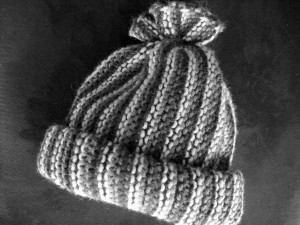I regularly hear people talk about how we should keep our heads covered when we are in the cold because we lose lots of heat through our heads. I’ve heard numbers like fifty or even as much as seventy-five percent of the heat we lose is lost through our heads. The head makes up roughly eight to ten percent of the total surface area of the body, and heat loss through our head usually accounts for roughly eight or nine percent of the total amount of heat we lose. An interesting trend of late is men with any sign of hair loss or balding completely shaving their heads. When you see a shaved, completely bald and rounded shiny head, I can see how you might think that this would be an easy way for heat to leave the body. However, when we are in cold environments we will lose heat from any exposed areas of our bodies; the heat loss is about the same whether it comes from the head, arms, torso, or legs. It is true that the head and scalp have a very healthy blood supply; you’ve probably realized that if you’ve ever had a laceration or cut on your head or face—lots of blood! This might be one of the reasons that people think we proportionally lose more heat from our heads. Other reasons might include some early flawed military studies and statements about excessive heat loss through our heads in an army survival manual. One way researchers study this is to immerse participants’ heads in cold water and monitor body temperature. In a study by Bristow and colleagues (2006) published in the Journal of Applied Physiology, the authors state, “In conclusion, whole head submersion in seventeen degree water did not contribute relatively more than the rest of the body to total surface heat loss.” Ultimately, it’s not a bad idea to keep your head covered when you are out in the cold because it might help keep your ears from getting frostbitten, but remember that you don’t lose more heat through your head compared to other parts of your body.
Reference:
Pretorius, T., Bristow, G., Steinman, A., and Giesbrecht, G. Thermal effects of whole head submersion in cold water on nonshivering humans. Journal of Applied Physiology (2006), Vol 101, pp. 669-675.

